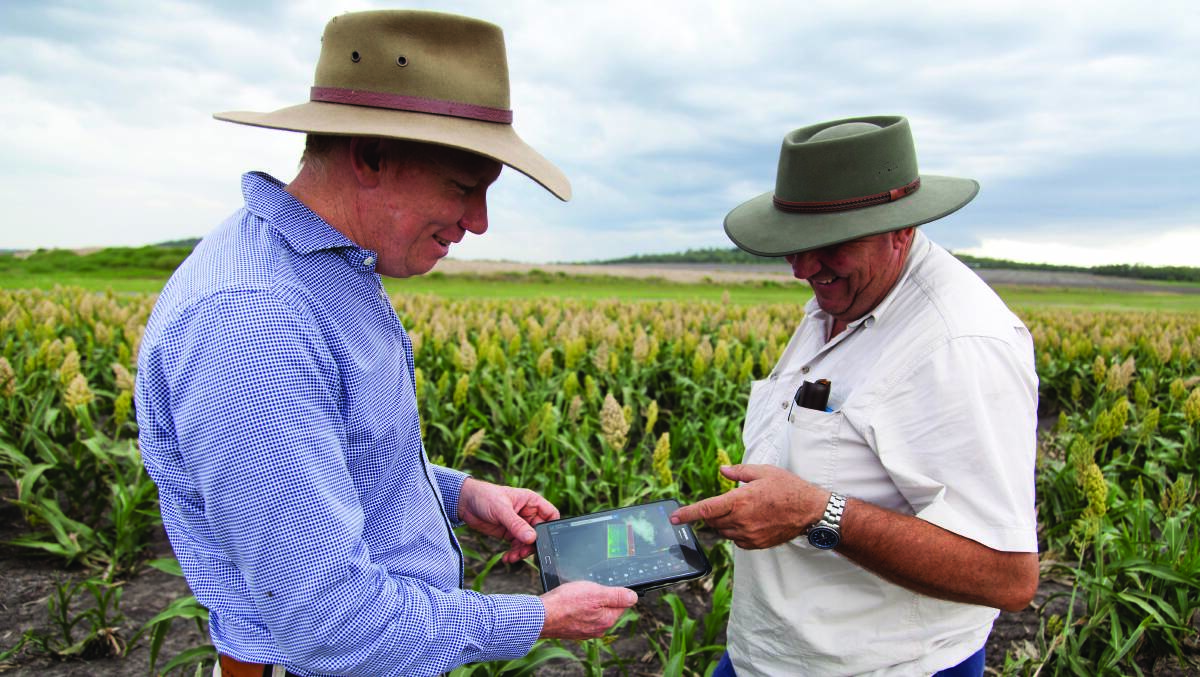Sponsored content.
Subscribe now for unlimited access to all our agricultural news
across the nation
or signup to continue reading

Taking precision agriculture from 'boutique to mainstream' is what drives Tim Neale, the Managing Director of DataFarming.
With his wife Peta, Tim has been working in precision agriculture for over 15 years, and started the Toowoomba-based DataFarming in 2017. Successfully making the technology low cost, simple and easy to access for agronomists and farmers has been key to some astounding success.
DataFarming aims to unlock the potential of precision agriculture products and farm data. The team is developing products and services for farmers and agronomists that are simple, automated and low cost, and provide on-ground actionable solutions. In October 2017, DataFarming launched its cloud-based platform which included its first product, a satellite imagery crop monitoring tool, allowing free global access to 10m resolution imagery.
As of mid-March 2019, DataFarming has 9000 properties in the system, comprising 5.1 million hectares of processed data, which has had an impressive increase of 20 per cent in just two months.
"The success comes back to making our product easier to use, less expensive and more affordable," Tim says. "I think people have been thirsty for this information for years, but the industry just hasn't provided it to them in the right format."
The core DataFarming product is satellite imagery captured every 5 days, which Tim believes is a good starting point for farmers and agronomists to get their hands-on data from their own properties.
Agronomists remain a key target for the DataFarming team, with significant savings in time and increases in knowledge to be gained, particularly when farms can routinely have 100 to 150 paddocks, and agronomists could be servicing ten or more properties.
"Agronomists and farmers are telling us they are saving time and making better decisions. Last year was particularly bad for frost damage, and people were making $100,000+ decisions confidently with the help of the satellite imagery".
"Any tool which will help agronomists do their job better is going to make life a lot easier - we've had agronomists say they've saved three hours in one paddock checking for desiccation in a pulse crop. A farmer reported a saving of 150 tonnes of Gypsum in a single paddock using variable rate application."
"There's a range of things people are using this technology for - soils, crop growth, yield variability, insect infestations, you name it, it's covering off on all those bases," Tim says.
Primary Producer, St. John Kent, explains how DataFarming has helped identify areas of his paddock that require attention - "Even though our paddock average might be five or six and a half tonne you're looking at sections of it that are poor and sections of it that are extremely good and that's what we are seeing (with DataFarming) and then we're being able to go to those areas and ask ourselves what's going on here? Can we find the issue? Can we identify it? Or is it yet another mystery of what we do?"
Exciting times are on the horizon for DataFarming, with their STACK product release set to bring a new age to the precision agriculture industry.
"A single satellite photo of your paddock is just at that point in time, so it makes it hard to look at long term trends. Analysing where the productivity has been over a number of years is where STACK comes in" Tim says.
The STACK product literally stacks together five years of imagery, so you pick the dates you want, and it will combine all those, and DataFarming then output five separate zones, from low productivity to high productivity for each paddock.
"It is crop biomass rather than yield, so it's not the ultimate measure, but it's a very good surrogate measure of crop performance." Tim said.
"I think industry generally just wants to overcomplicate this whole space, and while we're trying to get it into day-to-day agronomy, it just hasn't been there until now," he says.
Head to datafarming.com.au to find out more.

